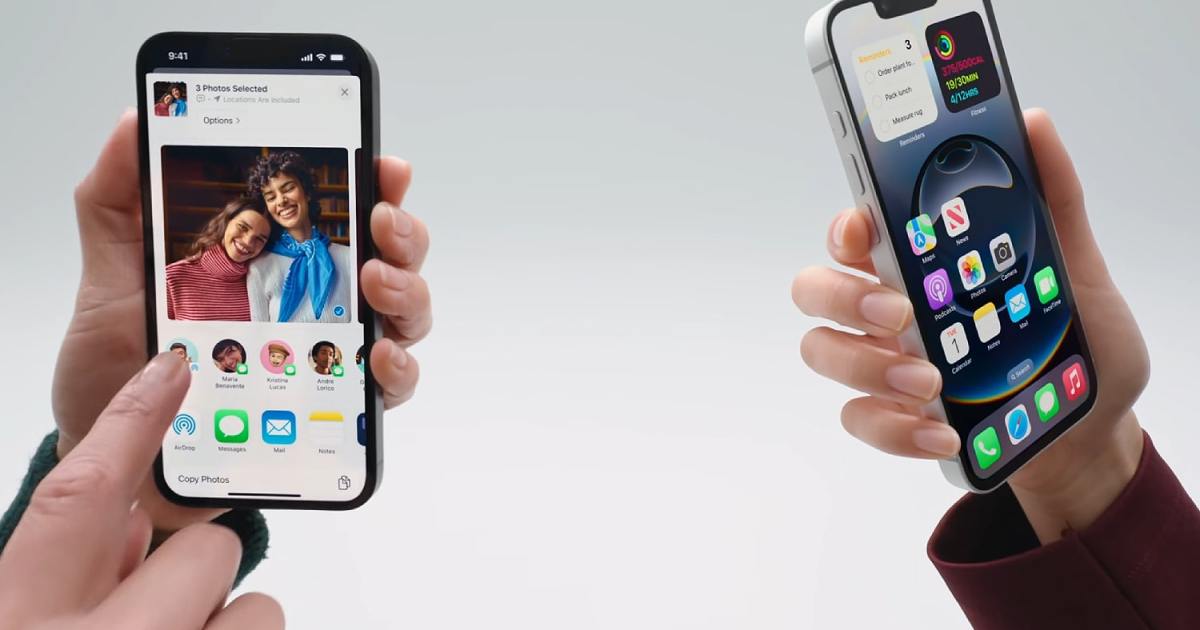The Apple iPhone 16e has been announced, and it’s a bold new direction for Apple. Based on the iPhone 14’s chassis, the new iPhone 16e is the modern iPhone the midrange market deserves, and it finally means you won’t be ashamed to place your midrange iPhone down on the table next to your friend’s iPhone 16 Pro. And not only has it had a facelift, it’s also had some serious internal upgrades too. Now rocking Apple’s A18 processor, the newest iPhone on the block promises to be a true powerhouse.
But is it powerful enough to stand toe-to-toe with the Flagship Killer? The OnePlus 13R is OnePlus’s midrange phone, and it’s sure to be a close competitor for many. Is the iPhone 16e a match for the OnePlus 13R, and should you buy one or the other if you’re looking to buy a powerful phone for $600?
Apple iPhone 16e vs. OnePlus 13R: specs
| Apple iPhone 16e | OnePlus 13R |
|
| Size | 146.7 x 71.5 x 7.8 mm (5.78 x 2.81 x 0.31 inches) | 161.7 x 75.8 x 8 mm (6.37 x 2.98 x 0.31 inches) |
| Weight | 167 grams (5.89 ounces) | 206 grams (7.27 ounces) |
| Screen size | 6.1-inch XDR OLED (60Hz) | 6.78-inch LTPO AMOLED (Dynamic 1-120Hz) |
| Screen resolution | 2532 x 1170 resolution at 457 pixels per inch | 2780 x 1264 resolution at 450 pixels per inch |
| Operating system | iOS 18 | Android 15 with OxygenOS 15 |
| Storage | 128GB, 256GB | 256GB, 512GB |
| MicroSD card slot | No | No |
| Tap-to-pay services | Apple Pay | Google Pay |
| Processor | Apple A18 | Qualcomm Snapdragon 8 Gen 3 |
| RAM | 6GB | 12GB, 16GB |
| Cameras | Rear: 48-megapixel primary
Front: 12MP |
Rear: 50MP primary, 8MP ultrawide, and 50MP telephoto
Front: 16MP |
| Video | Rear: 4K at up to 60 fps, and FHD at up to 240 fps
Front: 4K at up to 60 fps, and FHD at up to 240 fps |
Rear: 4K at up to 60 fps, and FHD at up to 240 fps
Front: Up to 1080p at 30 fps |
| Bluetooth | Yes, Bluetooth 5.3 | Yes, Bluetooth 5.4 |
| Ports | USB-C | USB-C |
| Biometrics | None, Face ID-only | Optical in-display fingerprint sensor |
| Water resistance | IP68 | IP65 |
| Battery | To be confirmed | 6,000mAh
Fast charging 80W |
| App marketplace | Google Play Store | Google Play Store |
| Network support | 5G | 5G |
| Colors | Black, white | Astral Trail, Nebula Noir |
| Price | From $599 | From $600 |
| Available from | Apple, Amazon, Best Buy | OnePlus, Amazon, Best Buy |
Apple iPhone 16e vs. OnePlus 13R: design
The new iPhone 16e is a gorgeous piece of technology. If you’ve loved an iPhone’s design in the last few years, then you’re going to love the iPhone 16e. As is tradition, Apple has used one of its previous designs to make a budget iPhone, but this time, instead of using the venerable and outdated iPhone 8, it’s using the iPhone 14’s body. That means the new 16e is gorgeous, and while it’s slightly outdated compared to recent iPhones, it’s nowhere near as noticable as the iPhone SE was, with its Touch ID sensor and chunky bezels. Now, the notch is about the only element that marks this as a cheaper iPhone, and that’s honestly very forgiveable. The iPhone 16e is a beautiful phone, and it’s a durable one too, thanks to an IP68 rating for water and dust-resistance.

The OnePlus 13R isn’t a bad looking phone, but we’d certainly say it values function over form. The matte aluminum frame has flat edges, making it a more modern design, but outside of that it’s a little boring. The matte glass finish is nice, but if you’re not picking up the Astral Trail colorway then you might find it overly simple. However, with this in mind, it has a solid build and feels like a premium phone, despite the price tag. The circular camera module has become OnePlus’s signature, and it adds to the premium overall style. An IP65 rating protects it against water jets, and the Corning Gorilla Glass 7i over the display shoud keep it safe from bumps, scratches, and drops.
As ever with design, this is very much a personal call. However, we’re suckers for a beautiful phone, and while the OnePlus 13R feels solid and premium, so does the iPhone 16e — and it’s gorgeous to boot. The iPhone wins this round.
Winner: Apple iPhone 16e
Apple iPhone 16e vs. OnePlus 13R: display

Apple has finally brought every iPhone from LCD to OLED, meaning every iPhone now uses OLED display technology. This is a big deal for the iPhone 16e, as it means stronger blacks, more vibrant colors, and a higher peak brightness. Also included, but not related to the shift to OLED, is a much larger 6.1-inch panel, and a much sharper display with a higher pixels-per-inch measurement.
But the new iPhone is taking on the OnePlus 13R — so how does it fare? Unfortunately for Apple, not well.
OnePlus specializes in delivering flagship specifications at lower prices, so it’s no surprise to see some seriously impressive display numbers here. Whether or not the larger 6.78-inch screen size is better is be a personal choice, but other elements are just objectively better. The OnePlus 13R’s display has a much higher peak brightness, so it’s easier to see in sunlight and under strong lights, and the refresh rate goes up to 120Hz, meaning it feels much smoother to use and watch. While Apple does do 60Hz very well, there aren’t many ways to spin the 16e’s lower refresh rate as better. It does sport more pixels-per-inch than the OnePlus 13R, but it’s so close you’re not likely to notice.
We’ll admit we haven’t had much time with the 16e’s display yet, so it’s entirely possible it will overcome the odds and dazzle us. However, at this point, it’s not looking likely. The OnePlus 13R wins here.
Winner: OnePlus 13R
Apple iPhone 16e vs. OnePlus 13R: performance

This one’s a tougher category to judge, not least because we haven’t had a huge amount of time with the iPhone 16e yet. However, there are a few assumptions we can make, even before we’ve reviewed the new phone.
First, it’s fair to assume that both of these phones will be stupendously powerful. The Snapdragon 8 Gen 3 is a last generation processor, but it’s still exceptionally powerful and capable of tackling the latest 3D games and demanding apps with contemptuous ease. Similarly, Apple’s A18 processor is a top-of-the-line chip, and while it’s not as fast as the A18 chip you’ll find the iPhone 16, it’s still powerful enough to handle anything you throw at it. The Apple processor may be the more powerful of the two, being built on the smaller 3nm process, but the difference isn’t likely to be enough to really notice.
There are bigger gulfs in other areas, though. The OnePlus 13R’s base variant starts at 256GB, outdoing the 16e’s 128GB model. The OnePlus phone also has much more RAM, though since iPhones use RAM differently, that probably isn’t a huge problem.
As mentioned, it’s hard to make a call here. The A18 may be the more powerful of the two chips, but the OnePlus phone outdoes it in pure storage options. This is a tie until we’ve had chance to test the iPhone 16e.
Winner: Tie
Apple iPhone 16e vs. OnePlus 13R: battery and charging

This is another category that really requires time with both devices to get the most out of it, we’ll defer full judgement until we’ve been able to get significant hands-on time with the iPhone 16e. However, there are more than a few educated guesses we can make about how this will shake down.
We’ll cover the phone we know about first: The OnePlus 13R. It’s equipped with a massive 6,000mAh cell, so right off the bat you know you’re getting a phone with a solid battery life. The reality is even more impressive. With regular use, we found the 13R was capable of going two days on a single charge, with the potential to go as far as three days on light use. That’s an incredible feat in an industry where lasting a single day is still the standard. In addition, OnePlus has some of the fastest charging in the business, and while the 13R’s 80W charging isn’t OnePlus’s fastest, it’s still way faster than most of its competition.
We don’t know how the 16e’s battery will hold up, or even how large the cell is likely to be, but if we take the iPhone 16 as a decent idea of what a cheaper, smaller iPhone with the A18 chip can achieve, we could be looking at a single day of battery life. A solid day, but still only a day. Charging speeds on the iPhone 16e also aren’t likely to be great, , and we don’t expect it to exceed 20W. Worst of all, though, Apple has binned MagSafe support for the 16e. Instead, it will get 7.5W wireless charging, which is a little disappointing.
While this has the chance to change, depending on how well the 16e holds up in our tests, with a very long battery life and far better charging options, we wager the OnePlus 13R will be the stronger of the two here.
Winner: OnePlus 13R
Apple iPhone 16e vs. OnePlus 13R: cameras
The iPhone 16e has a single 48-megapixel lens on the back, and it looks likely to be the same 48MP main lens from the iPhone 16. This is a very good thing, as the iPhone 16’s main camera is excellent, taking consistently good shots across a variety of circumstances. Throw in Apple’s Photographic Styles and AI features, and you have an excellent camera system on the 16e. We haven’t had any time with it yet, but it’s likely it will be a strong, if limited, camera setup. There’s an integrated 2x telephoto zoom inside that one lens, but there’s no ultrawide lens, which is a bit of a disappointment since it’s based on the iPhone 14, which had a second lens. Still, that main lens is likely be very strong.

But is it going to be better than the OnePlus 13R’s camera? It’s hard to say at this point, but what’s clear is the 13R has a solid camera. It has a 50MP main camera, with a 50MP telephoto lens, and an 8MP ultrawide lens, and it takes good shots across all three lenses. The 8MP lens has a small drop in quality, as you’d expect, but it’s still good across the board. It’s strong and versatile, and while it’s not the equal of most of the best camera phones, it’s still a very good camera.
Does that leave the iPhone 16e at the mercy of the multi-lens OnePlus 13R? Perhaps — but it’s important to note Apple often sprinkles a little bit of magic on its phone cameras. It’s entirely possible for single-lens cameras to outdo multi-lens systems; just ask the early Pixel phones. This is too close for us to call, we’re leaving this as a tie until we’ve had chance to play with the 16e.
Winner: Tie
Apple iPhone 16e vs. OnePlus 13R: software and updates

The crux of this category comes down to a single question: Do you prefer Android or iOS? Most of us have enough experience with both to answer this question by now, and it’s likely to inform how you feel about buying either of these phones. But if you’re not familiar with one, rest assured both operating systems are easy to learn, fast, and havbe slowly become more and more like the other. Switching between the two is no longer as huge an issue as it once was.
It’s important to make a note about OnePlus’s software, Oxygen OS. It’s a long-running trope that manufacturer skins are bad, and while some still are, Oxygen OS is not included in that. It’s fast, responsive, and improves over stock Android in a few ways, like with the improved Open Canvas multitasking. AI is the current flavour of the year, so it’s important to note the AI features available here. You’ll get Circle to Search, photo editing, and other standard Android AI features. In terms of software updates, OnePlus has promised four years, which falls behind Samsung and Google, but is still impressive enough.

Apple is the reigning king of software updates, having been updating old devices before it was cool, and while it doesn’t make promises for software updates, you can be sure your iPhone will be getting updates for years to come. In terms of AI, the 16e gets all the same Apple Intelligence features as the iPhone 16. That includes tools for changing the tone of your writing, image generation, and using ChatGPT to superpower Siri. It’s a good suite of tools now, and the iPhone 16e is the cheapest way to experience them for yourself.
This is another one that’s tough to call, as so much of it comes down to personal preference. At the moment, we’ll give it to Apple simply for pure number of software updates.
Winner: Apple iPhone 16e
Apple iPhone 16e vs. OnePlus 13R: price and availability
The Apple iPhone 16e is currently available for pre-order, and prices start from $599 for the 128GB model. As it’s an iPhone you’ll be able to find it anywhere that sells phones.
The OnePlus 13R is a real bargain, packing flagship specs into a $600 price point. You can buy it right now.
Apple iPhone 16e vs. OnePlus 13R: verdict

It wasn’t expected for Apple to release a $599 phone instead of a cheaper SE phone, and as such, it’s up against some stiff competition. The iPhone 16e‘s beauty and AI brains outweighed the OnePlus 13R in this early verdict, but the OnePlus 13R has the advantage in performance and camera, with some utter domination in display tech and battery performance. In fairness to the newest iPhone, the OnePlus phone is capable of taking on the biggest beasts in the mobile space in a lot of these spaces, so it was always going to struggle.
So where does the iPhone 16e fall here? Unfortunately for Apple, it looks as if it falls at the OnePlus 13R’s feet. At this moment in time, while some of the categories may be tight, there’s a definite advantage forming for the Flagship Killer. And really, when you consider the iPhone 16e is basically a souped up iPhone 14, that was always going to be the case. The OnePlus 13R is just that good, and even if the iPhone 16e is good, it can’t match OnePlus’s mastery of this price point.
Read the full article here















